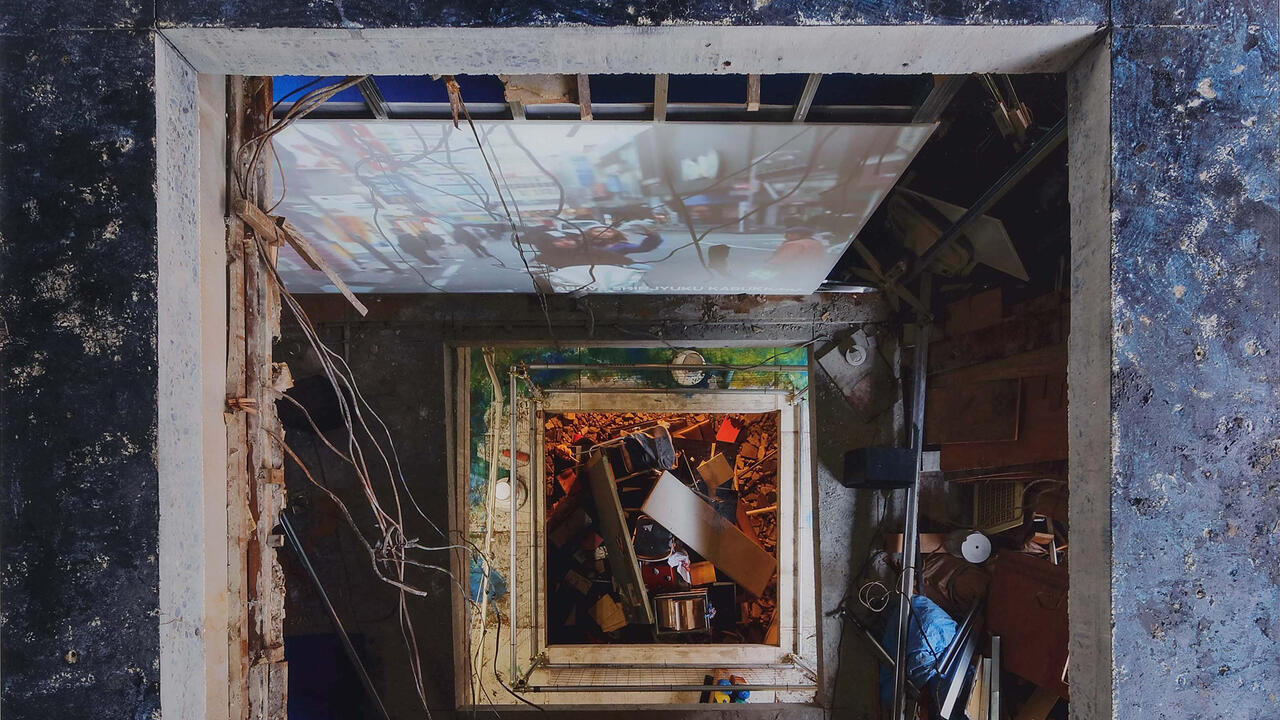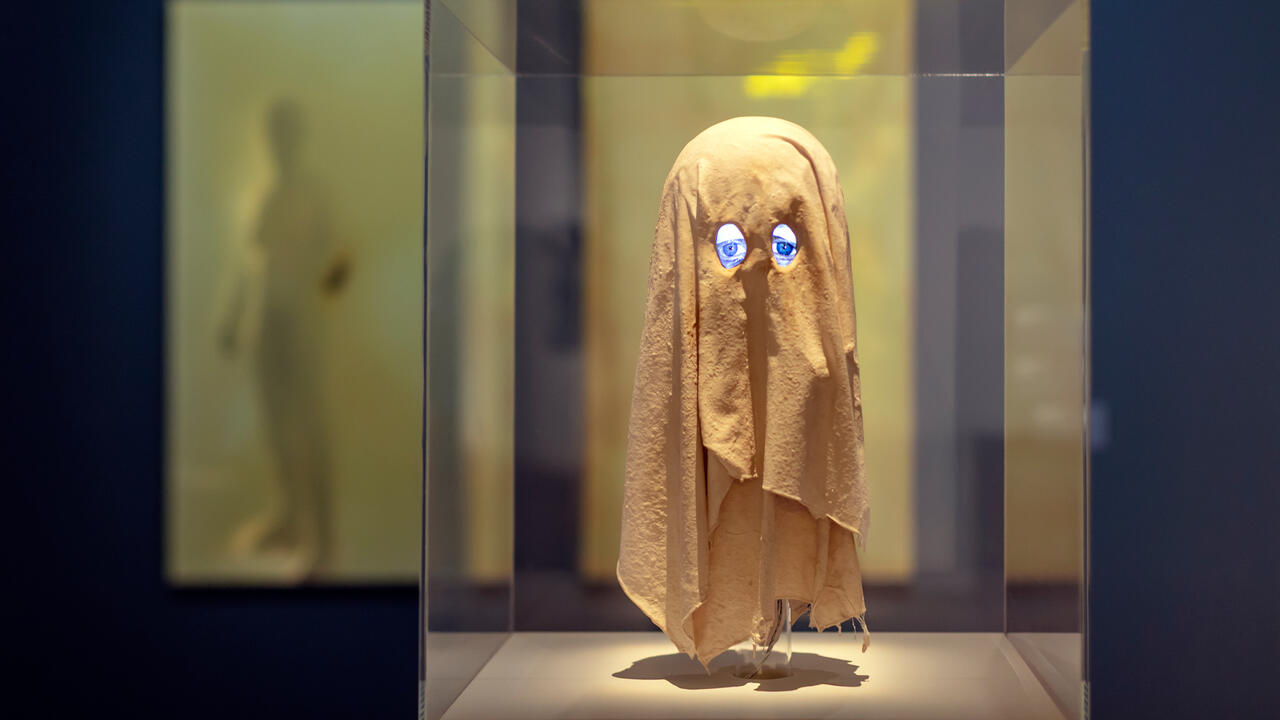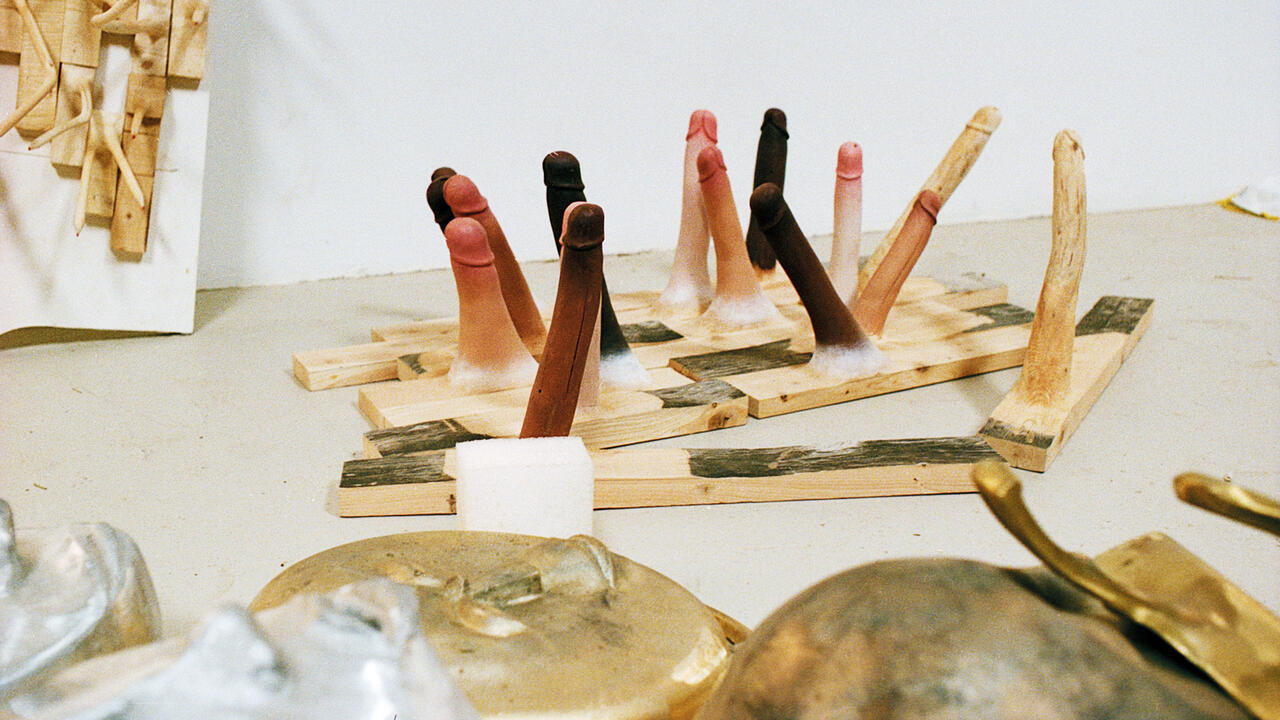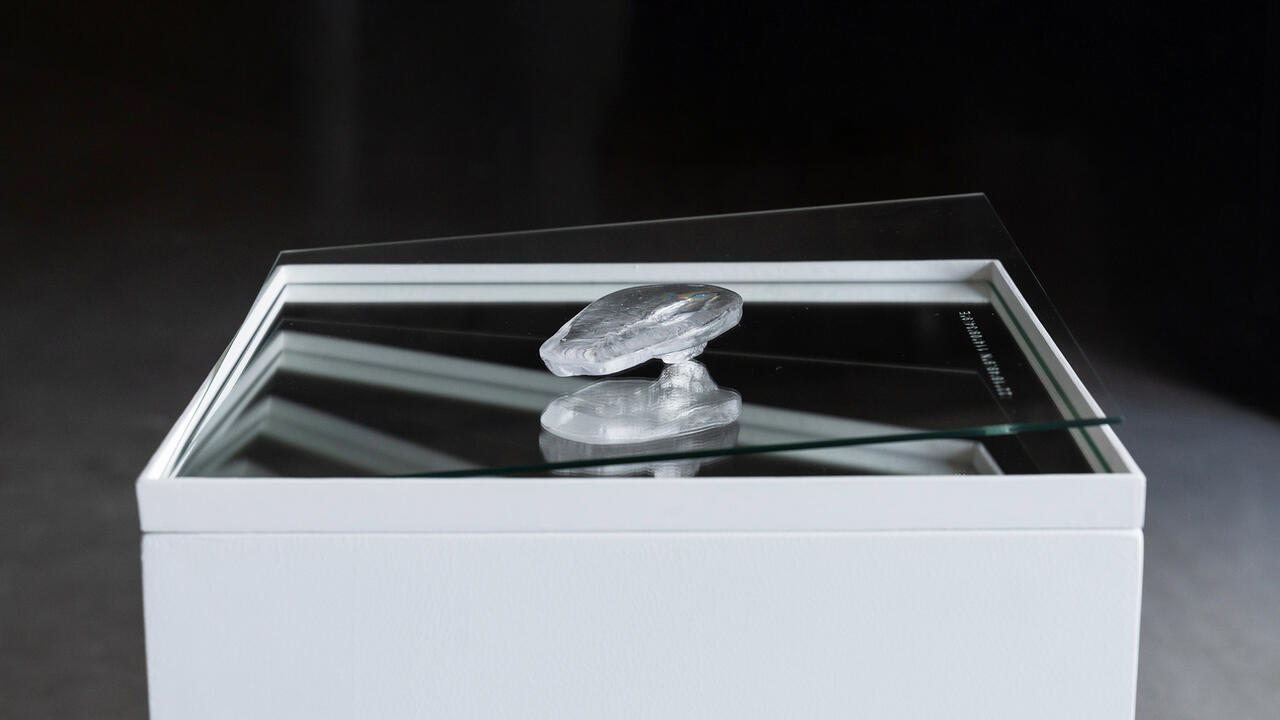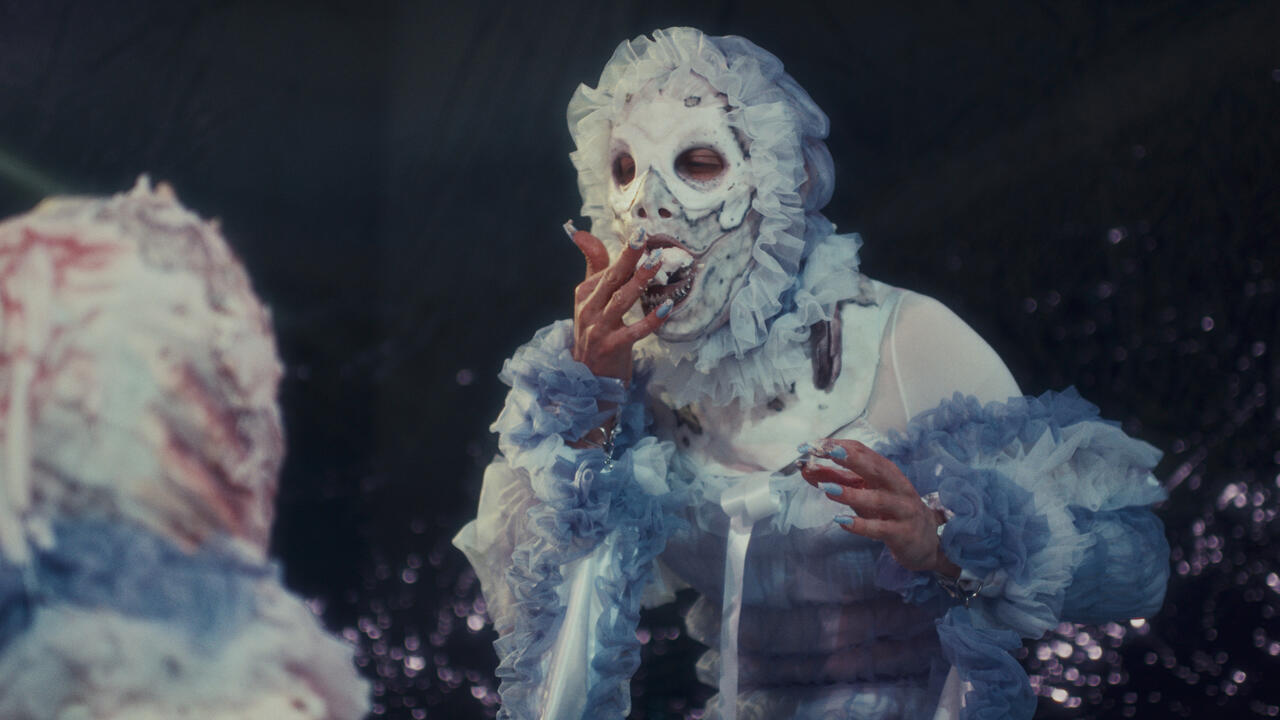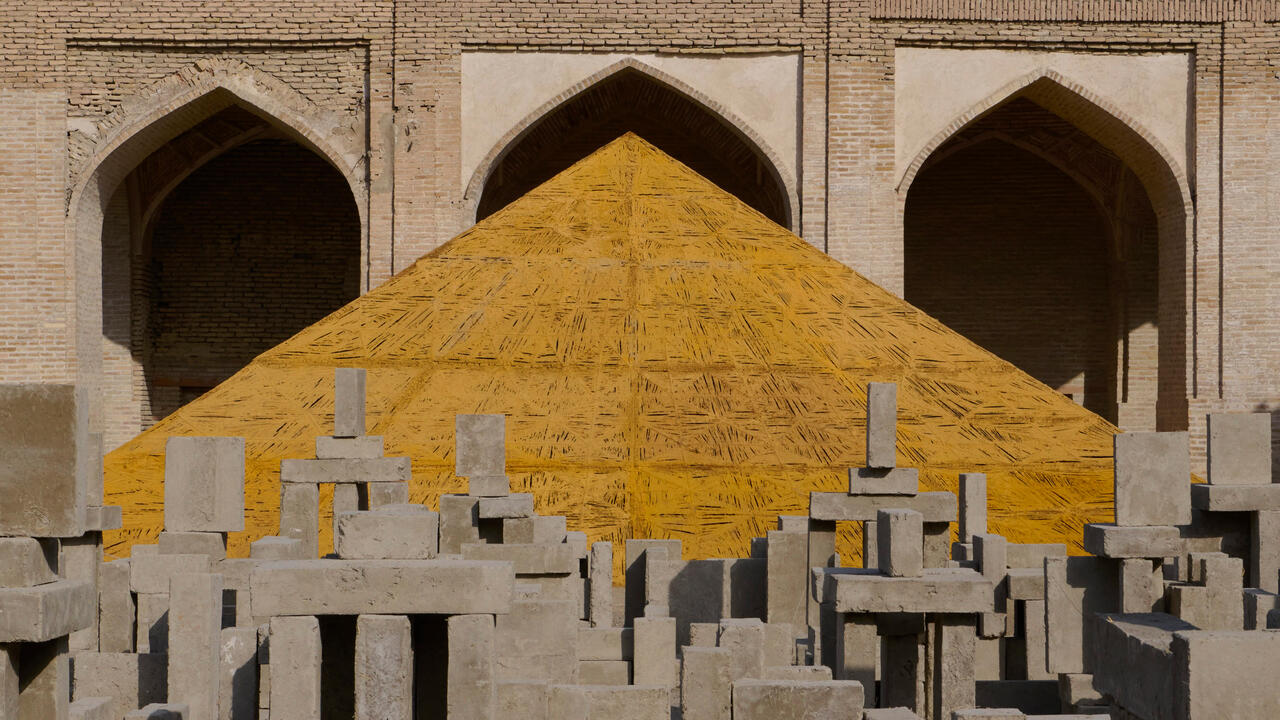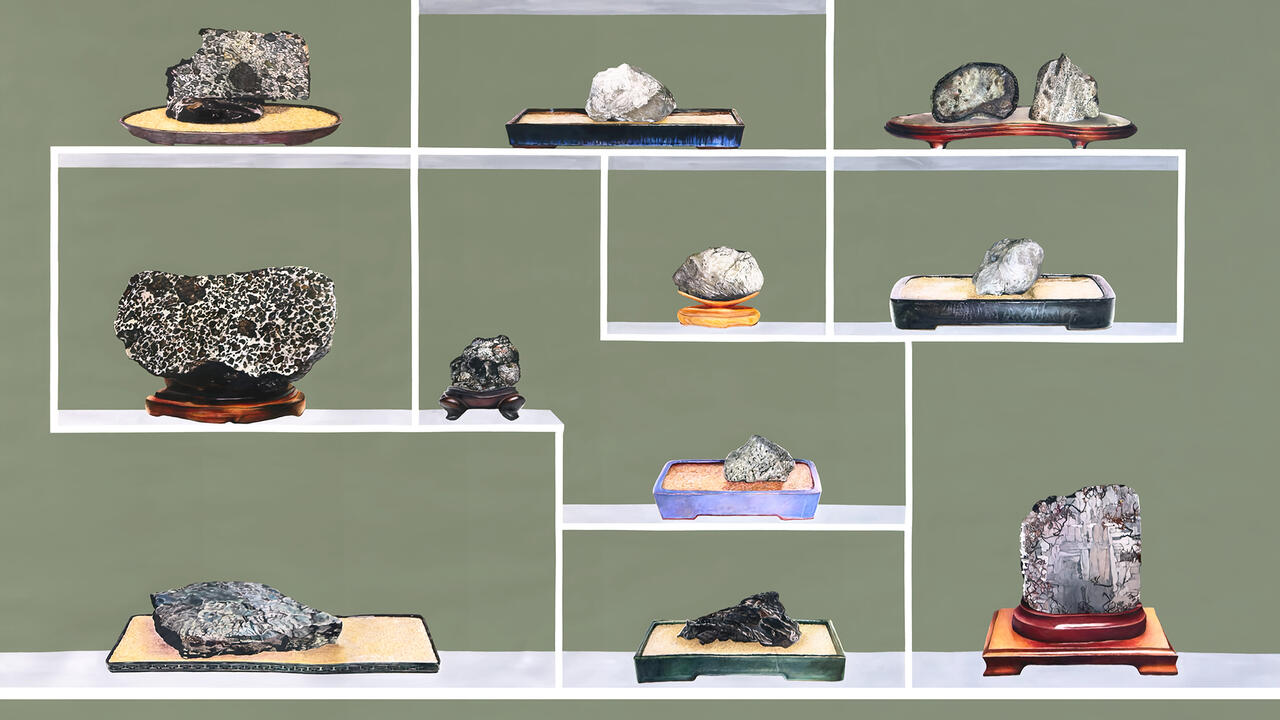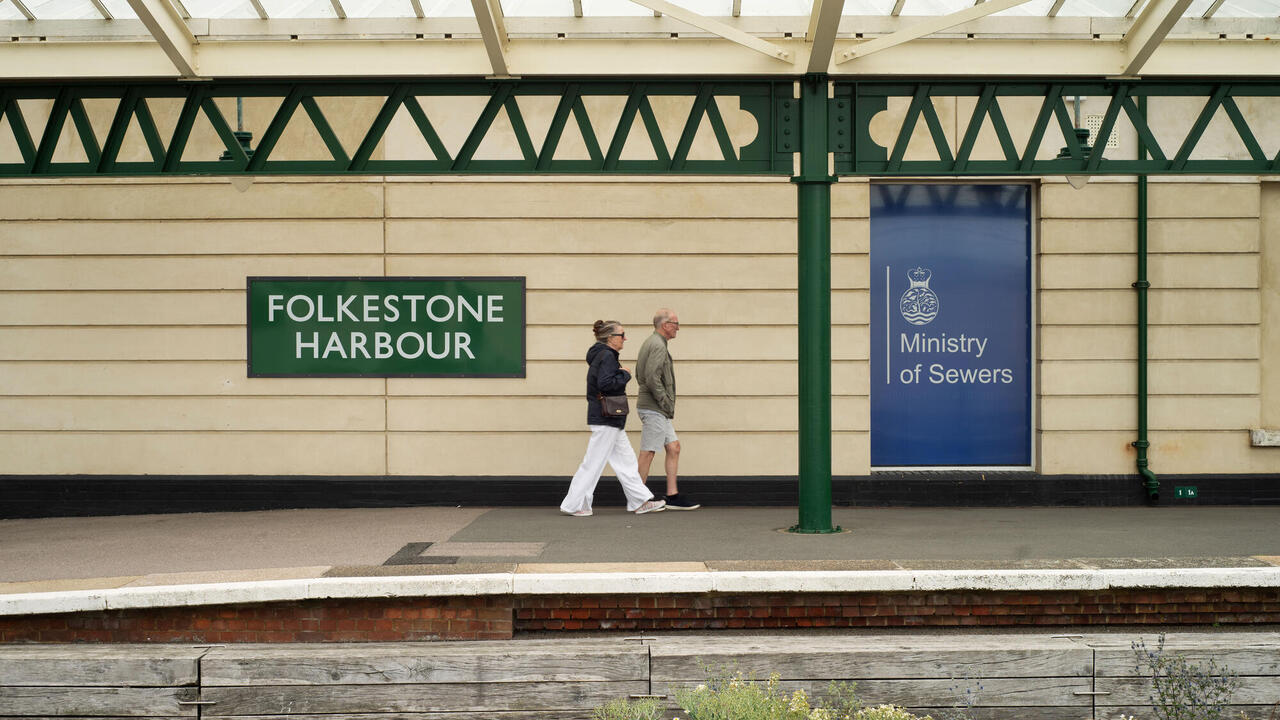Critic’s Guide: Hong Kong
From usual haunts to exhibitions off the beaten path, the best current shows around town
From usual haunts to exhibitions off the beaten path, the best current shows around town


‘Carnival’
Massimo de Carlo
13 July – 9 September 2017
All the (gallery’s) a stage at Massimo de Carlo Hong Kong, currently host to an eclectic group exhibition centred around masks, the mythological and the theatrical. Matthew Monahan’s golden sculptures anchor the show: hand-wrought and unfurling like giant metallic origami, the imperious faceless masks invite discourse on industrialism and futurism whilst alluding to both classicism and a contemporary mysticism. Luigi Ontani’s whimsical carnivalesque creatures are inspired by his travels in Asia as well as his lifelong explorations in self-portraiture – watch out for a devilish hot pink lobster with 12 eyes. Rounding up the medley are Zhao Gang’s vibrantly coloured paintings of masked Oriental characters: mysterious, eerie and morose, they appropriate allegorical imagery and historical stereotypical motifs from the Far East, evoking the multifarious forms and ways in which we reveal and amplify what we most wish to conceal.

Markus Brunetti, ‘Facades’
Axel Vervoordt Gallery
8 June – 26 August 2017
The full impact of Markus Brunetti’s monumental hyper-realistic photographs can only be experienced in person, and the artist’s first solo exhibition in Asia at Axel Vervoordt Gallery offers such an opportunity. The German artist spends years photographing a single church facade, capturing no more than a few square metres per high-definition exposure to illuminate encyclopaedic levels of architectural detail. Every inch of the buildings’ facades are documented with equal intensity and attention, paying tribute to the laborious artistry of builders and craftsmen of ages past whilst highlighting the arduous rigour of Brunetti’s own protracted digital editing process. The facades are portrayed with a straight-on central perspective, conveying an estranged mathematical neutrality akin to the architects’ original sketches as well as Bernd and Hilla Becher’s serial industrial photographs half a century ago. A riveting joy to behold, the works also prompt contemplations on pervasive surveillance technology and the evolving realms of artistic and documentary photography.

‘Composing Stories with Fragments of Time’
Karin Weber Gallery
29 June – 12 August 2017
An intimate group show comprising newly commissioned works by eight established and emerging Hong Kong artists, Karin Weber Gallery’s ‘Composing Stories with Fragments of Time’ is a labour of love. Curator Kenneth Young collects hand-written letters of correspondence from family archives and antique shops, and one such anonymous letter dating from 1997 constitutes the genesis of the exhibition. In their respective responses to the letter, the artists weave a tapestry of subtle narratives that eschew easy handover rhetoric, espousing instead a complex fragility of the domestic and the quotidian: a porcelain letter of copied prose that splintered in the mail (Annie Wan, (Lost) Art of Writing Letters / Hand-copy of Excerpts from Zhi Tingguangshu by Tang Junyi, 2017); meticulously crafted ‘flipbooks’ made up of used colonial and United Nations stamps (Luke Ching, Imagine There’s No Countries, Imagine There’s No Heaven, 2017); a collage of anonymous vintage photographs, juxtaposed against new photos and vintage wooden frames, that belie not so much nostalgia for the past than an unconscious clinging to domestic objects in lieu of national and personal identity (Lau Chi Chung, Letter Without Words 1,2,3, 2017). A potent pathos permeates, conjured through stories that are fictional (Angela Su, Caspiar, 2017) as well as that which are absent – Carmen Ng’s Missing Words (2017), a series of painstakingly blotted out typeset letters inspired by her father’s obsolete typesetting business, is particularly eloquent in its silence.

‘Canton Express’
M+ Pavilion
23 June – 10 September 2017
M+ Pavilion’s ‘Canton Express’ is a restaging of part of the historical 2003 ‘Zone of Urgency’ exhibition curated by Hou Hanru for the 50th Venice Biennale. The exhibition was a labour of love in a different sense – that year, the inaugural Chinese Pavilion was cancelled because of the serious acute respiratory syndrome epidemic; however, a group of 14 artists from the Pearl River Delta managed to smuggle their works to Venice via a Yangjiang import-export company, with local set up and transfer costs generously covered by collector Uli Sigg and Hong Kong gallerists Johnson Chang and Alice King Tung Chee-ping. The landmark exhibition debuted art from southern China, previously overshadowed by their high-profile counterparts up north, to the wider international audience. The Hong Kong restaging of the show features a biting selection of multi-media works and installations – some original, some recreated – that conveys a still relevant restlessness against rapid urbanization and self-deprecating wit. Highlights include Zheng Guogu’s Sample Room (2003/17), an installation featuring rows of kitchenware mass-produced by his hometown alongside real email correspondence between the artists and curator ahead of the Biennale; and Xu Tan’s Biennale.dog (2003), a banner featuring Zheng and his brother carrying a dog with the fake url of the Biennale stamped on its body.

‘In Search of Miss Ruthless’
Para Site
2 July – 10 September 2017
Curated by this year’s winners of Para Site’s Emerging Curators open call programme, ‘In Search of Miss Ruthless’ interrogates the decades-long history of beauty pageants in Asia. The title echoes that of the iconic Miss General Idea Pageant from 1971, the magnum opus of legendary Canadian collective General Idea (active 1967–94). The search for – or invention of – Miss General Idea started with a farcical beauty pageant as a metaphor for the art world; in the ensuing years, the epochal project pushed against dominant conservative narratives and queered the notion of binary genders. Nearly half a century later, ‘In Search of Miss Ruthless’ zeroes in on the Asian diaspora, similarly experimenting with the absurdity of pageantry as a site of contestation and mobilization. The sprawling exhibition features 23 young artists; while some works are less strong than others, the wide-ranging selection (accompanied by extensive audio tracks) offers ample opportunities to dissect media, gender and identity politics.

‘Sparkle! When Will I See You Again’
Oil Street Art Space
23 June – 17 September 2017
‘You do not become a barking molar dog, but by barking, if it is done with enough feeling, with enough necessity and composition, you emit a molecular dog’, declared French philosopher-duo Deleuze and Guattari in 1980. The curious proclamation comes to mind in ‘Sparkle! When Will I See You Again’, an exhibition located slightly off the beaten path at Oil Street in North Point, which skilfully manoeuvres the bizarre, unlikely and often unstable relationships between man and animal, image and utterance. Swedish artist Erik Bünger’s The Elephant who was a Rhinoceros (2017) is a video performance of a compelling, rigorous and lyrical text by the artist that leaps gracefully through time and space, traversing the boundaries of history and geography and encompassing genres of logic, philosophy, art theory, folklore and proverb. Chinese video artist Cheng Ran presents the second leg of a three-part film project, the first presented at the New Museum in New York and the third scheduled to be shown at the Tel Aviv Museum of Art in 2018, which offers alternative perspectives on Hong Kong through the eyes of an eagle and a stray dog. Time-based performance and video installations by Hong Kong artists Choi Tsz Kwan ger, Scarlet Yu and Enoch Cheng (also the Project Curator) round up the poetically absorbing exhibition.

Jacqueline Kiyomi Gordon, ‘Catchy’
Empty Gallery
13 July – 19 August 2017
It was my first time venturing to Empty Gallery, the cutting-edge ‘black cube’ space located in the remote Tin Wan district in southwest Hong Kong, and the less said about my visit the better – in order to preserve the experience of potential first-time guests. In brief, Los Angeles-based sonic artist Jaqueline Kiyomi Gordon’s first solo exhibition in East Asia is a multi-sensory soundscape augmented by precise and strategic architectural interventions in the gallery, which stimulates a multi-dimensional, wholly immersive and ultimately introspective journey. Not for the faint or feeble hearted – but can you resist never knowing?
Main image: Ka-Man Tse, Untitled (detail), 2016, archival inkjet print, 51cm x 34 cm (pictured: Fei Lu). Courtesy: the artist and Para Site, Hong Kong








